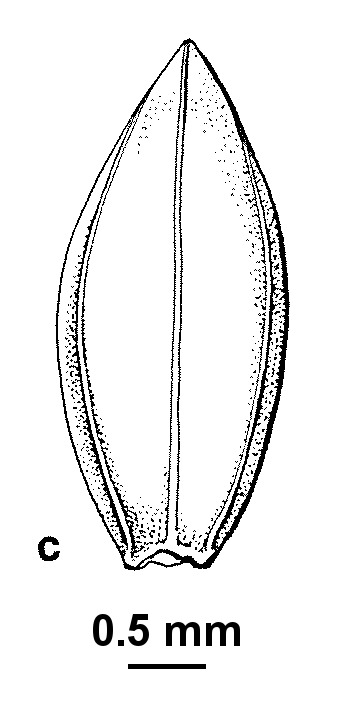Paspalum vaginatum
Sw. Salt-water CouchSemi-aquatic, long-rhizomatous and stoloniferous perennial. Culms erect or ascending, to c. 50 cm high; nodes of prostrate stems glabrous. Leaves glabrous or sparsely ciliate along the margins; blade channelled or (commonly) closely folded, to 15 cm long and 4 mm wide; ligule truncate, c. 1 mm long. Panicle forked (rarely with 3 racemes), the racemes 2–5 cm long. Spikelets subsessile, in two rows, oblong-ovate, 3–4.5 mm long, acute; lower glume lacking; upper glume 4–6-nerved (mid-vein not developed) as long as spikelet, glabrous; lower lemma 5-nerved, equal to upper glume; fertile lemma slightly shorter than spikelet, almost flat, firm, smooth and pale. Flowers Oct.–Mar.
VRiv, GipP. Naturalized in all mainland States and territories except ACT. Native to tropical North and South America. Inhabits coastal drainage areas and estuaries. In Victoria, known from few collections from coastal or near-coastal sites in Gippsland, e.g. Lake King near Bairnsdale, Cape Conran, Tullaberga Is. near Mallacoota, but probably overlooked owing to its similarity to the commoner Paspalum distichum and other saltmarsh grasses (e.g. Distichlis distichophylla, Sporobolus virginicus) with which it often occurs.
Walsh, N.G. (1994). Poaceae. In: Walsh, N.G.; Entwisle, T.J., Flora of Victoria Vol. 2, Ferns and Allied Plants, Conifers and Monocotyledons, pp. 356–627. Inkata Press, Melbourne.
 Spinning
Spinning



